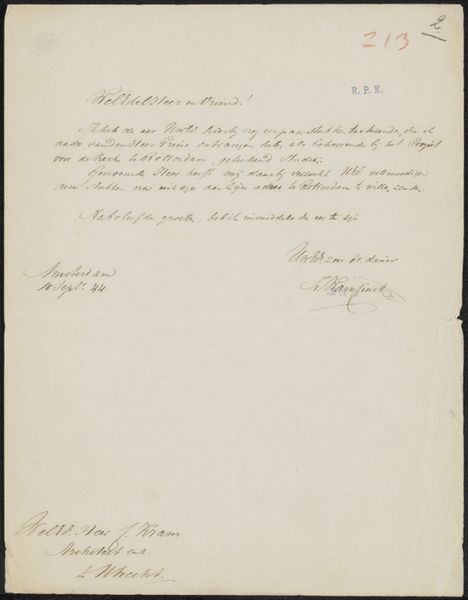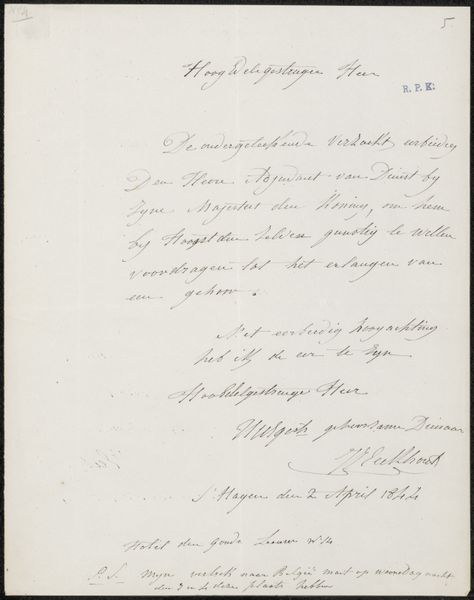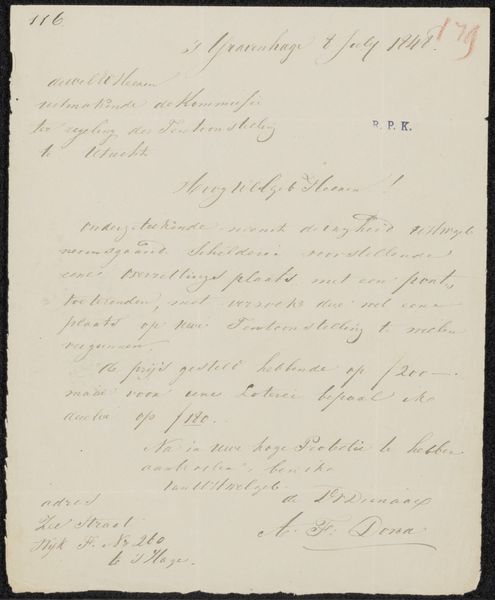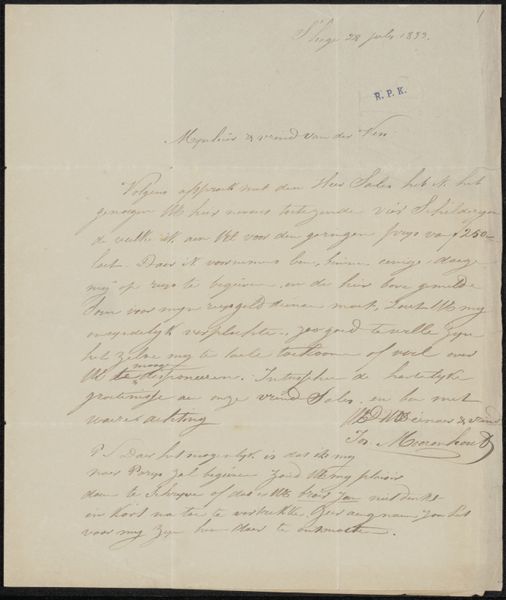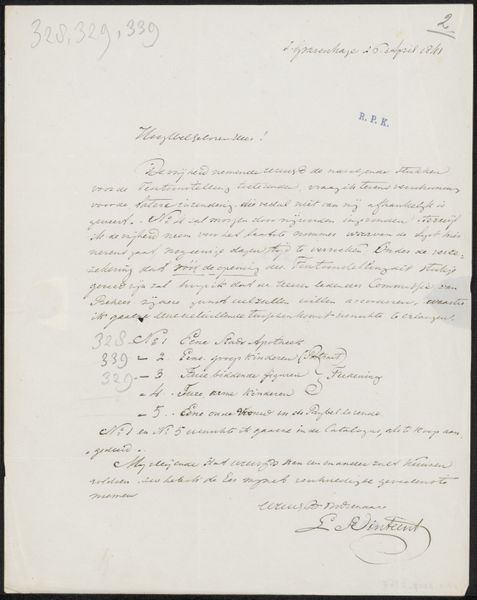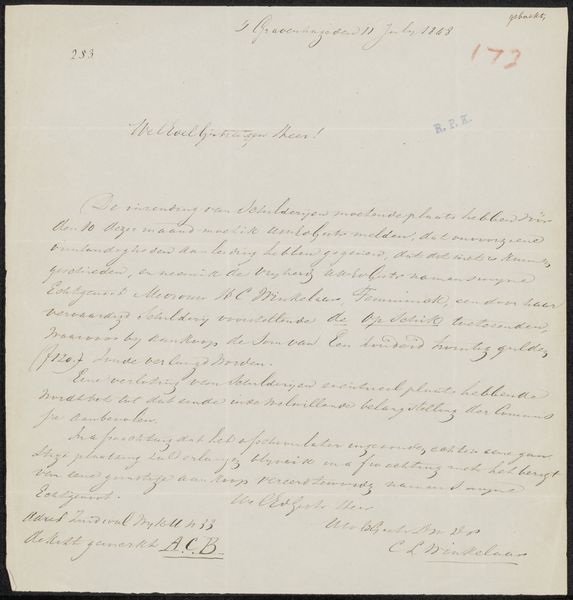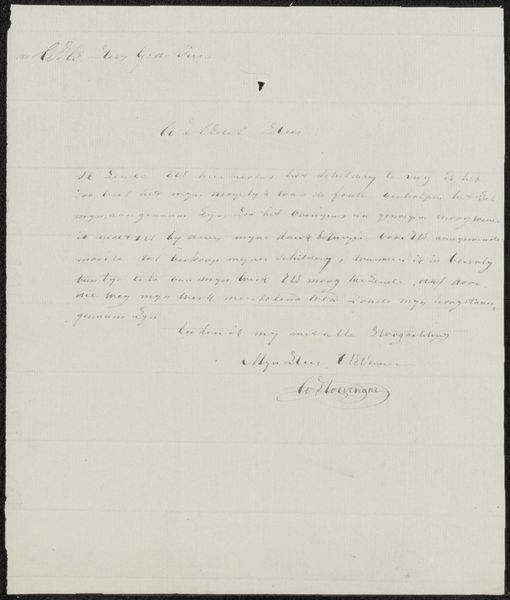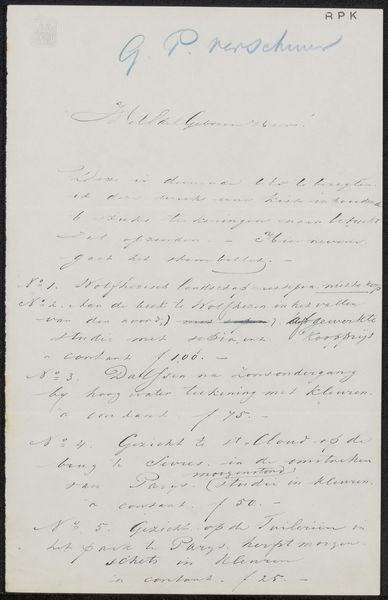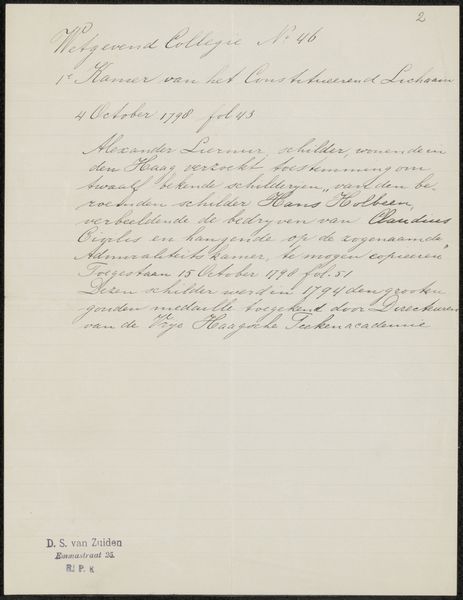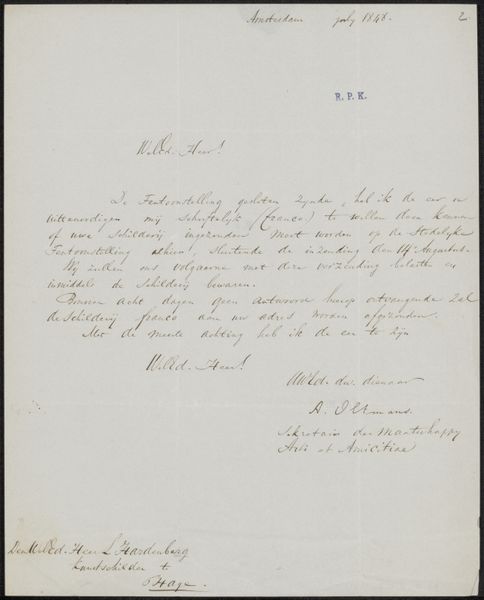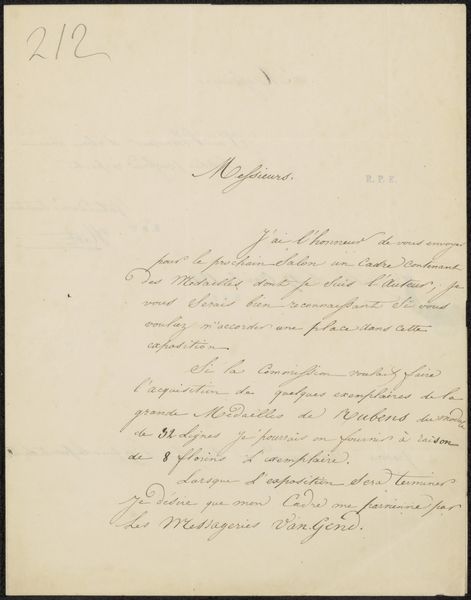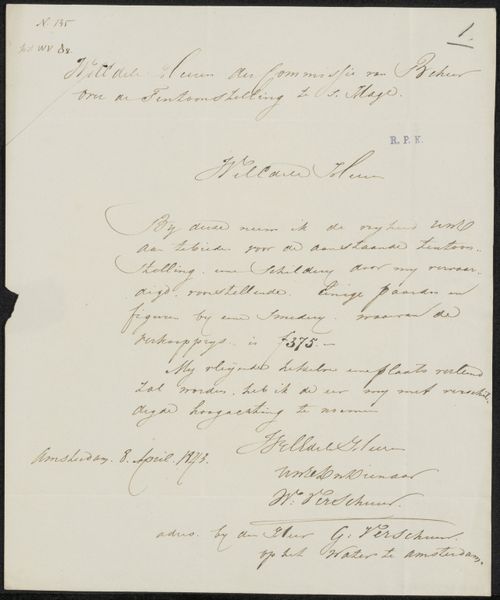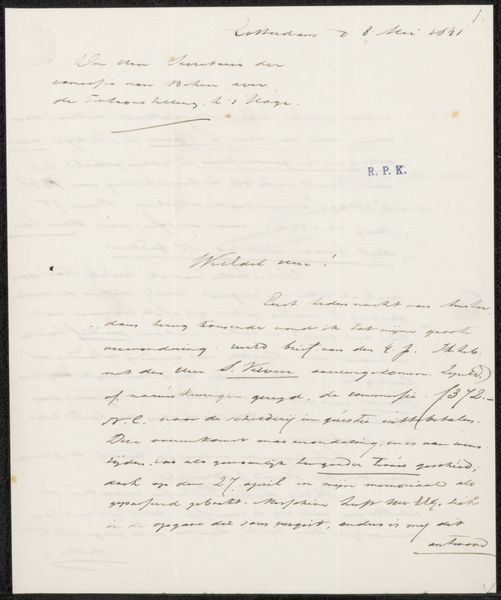
Brief aan jonkheer H.P.F. Hooft, secretaris van de commissie van de Tentoonstelling van Levende Meesters in Den Haag Possibly 1843
0:00
0:00
drawing, paper, ink, pen
#
drawing
#
paper
#
ink
#
pen
#
calligraphy
Copyright: Rijks Museum: Open Domain
Curator: Here we have "Brief aan jonkheer H.P.F. Hooft, secretaris van de commissie van de Tentoonstelling van Levende Meesters in Den Haag," a letter possibly from 1843, housed here at the Rijksmuseum, attributed to Anton Weiss. Editor: Immediately, I'm struck by the exquisite quality of the penmanship. It’s not just functional writing, it's a form of practiced art. You can almost feel the pressure of the nib on the paper. Curator: Precisely. This letter offers a glimpse into the artistic world of 19th-century Netherlands, revealing the role of exhibitions and their organizing committees in shaping the art market and public taste. Editor: What kind of paper and ink were they using? The shades of fading and wear suggest how commonplace it was as a means of sharing ideas; less precious than what the skill of the writer might lead us to believe today. And I’d love to know more about the type of quill used for this delicate calligraphy. Curator: Good question. Considering this was intended for someone of rank within the art exhibition commission, the choice of materials reflects societal expectations for correspondence and visual elegance. Editor: Do we know anything about this art exhibition of "Levende Meesters?" Was it a big affair? It sounds like a key point for contemporary Dutch artists trying to find patrons and a wider public following. Curator: It was an important event! "Living Masters" shows, as they were called, represented a move toward celebrating contemporary national artists. Being accepted, as this letter suggests the artist wishes, meant validation by peers and access to potential buyers. Editor: So this letter embodies both artistic expression through skilled penmanship and the very practical need for artists to navigate the prevailing system. I'm struck by the amount of social negotiation that took place through pieces such as this. It shows the way art was promoted and valued in Dutch society at the time. Curator: I agree. Letters like this reveal the social and economic frameworks that underpin artistic practice. It underscores the crucial roles that exhibition committees played, making or breaking artists through their decisions. Editor: Indeed. Next time, let's make sure to focus in more on how exhibitions continue to shape artistic value! Curator: A very apt suggestion, I concur!
Comments
No comments
Be the first to comment and join the conversation on the ultimate creative platform.
